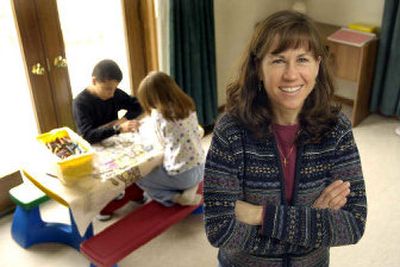Homeschooling on the rise

NEW YORK — Jill Nardini planned to homeschool her family even before she had children.
Nardini, 44, a self-described older mom who had fertility problems, said she wanted to spend as much time as possible with her children. Her desire to teach her 9-year-old son Joey and 7-year-old daughter Jessie about their Christian faith also influenced in the decision.
“I know my kids better than anyone else. I know how to direct them, said Nardini, who lives in Kentwood, Mich.
Though still rare, the number of homeschooled children has been rising steadily for the last several years. In 2003, the last year for which figures are available, about 1.1 million students or 2.2 percent of children aged 5 thorough 17 where being homeschooled, according to he National Center for Education Statistics. That’s a 29 percent increase from 1999.
Numerous factors are fueling the trend to homeschool, experts said, including parents’ concern about the environment and academic performance in schools or a desire to provide religious instruction. A child’s health problems or other special needs are also common reasons.
Whatever the trigger for opting out of a traditional classroom, there are now a myriad services available including magazines, curriculum planners, tutors and specialized class programs to help homeschooling families educate their children. Eduventures, a research and consulting firm, estimates that the homeschool market is around $650 million, and has been growing at around 8 percent in the last few years.
“There is money to be made,” said Tim Wiley, an analyst at Eduventures.
However, Wiley and others said catering to the market isn’t always easy. Parents sometimes decide to stop homeschooling or change curriculums. Wiley noted distributing products through mail typically brings logistical problems and there is pricing pressure in the tutoring market.
Regulations governing homeschooling differ from state to state. Experts advise homeschooling families to check with local authorities to insure standards are met. Local homeschooling associations can also help decipher the rules and advise parents about how to keep good records of their children’s‘ performance which may be necessary for college or job applications.
Suzanne Riojas opted to buy a packaged, accredited curriculum four years ago when she began homeschooling her three younger sons, now ages 18, 16 and 14, because it was easier than developing her own program and wanted to avoid any potential problems when her children apply for universities or employment.
The curriculum comes with DVDs for various subjects and there are teachers available by e-mail or phone to help handle any problems. She checks her son’s homework and quizzes but tests are graded by teachers working for the curriculum provider, A Beka Academy, which also keeps records.
The New Jersey public schools in her district were sub-par, according to Riojas, claiming her son’s fourth grade teacher couldn’t control the students and the high school had limited class options. She pulled them out after a few weeks. Even though the family now lives in Texas, Riojas continues to homeschool because she says her boys are thriving.
Riojas homeschooled her older children, now ranging in age from 25 through 28, for a while back in the early 1990s and said it is easier now because of all the homeschooling associations, books, and computer programs available.
“It is incredible,” said Riojas. “We didn’t have all this the first time.”